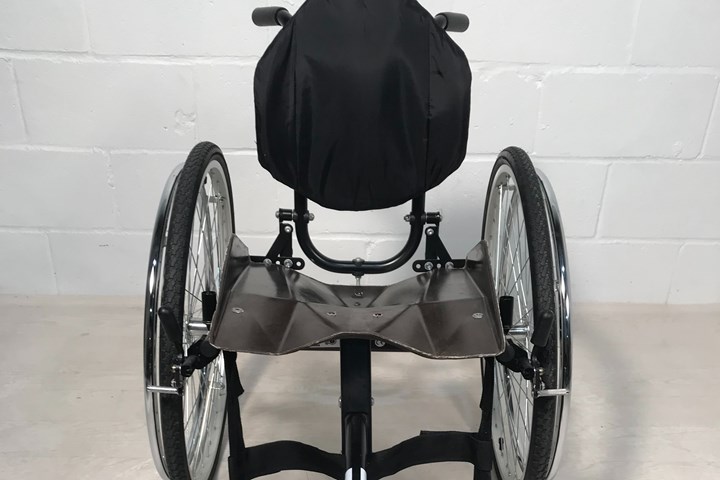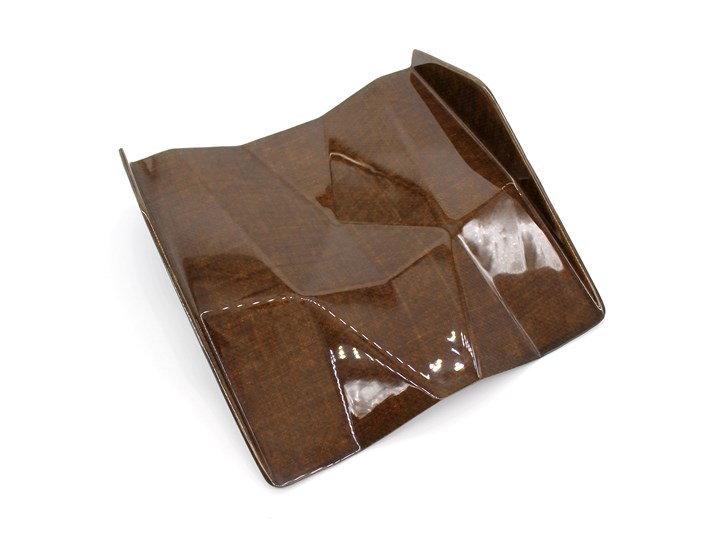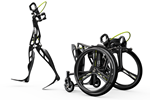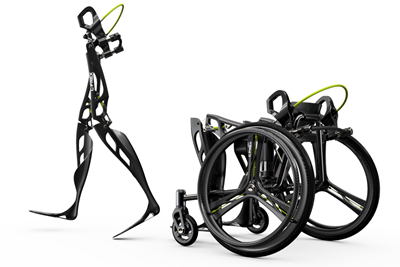Natural fiber composite wheelchair seat design aims for sustainable mobility
The National Composites Centre and Motivation provide an easily manufactured, locally sourced mobility solution for disabled people in developing countries.

Photo credit, all images: NCC
On June 9, the National Composites Centre (NCC, Bristol, U.K.) announced that it has collaborated with global disability charity and social enterprise Motivation (Bristol, U.K.) to design and manufacture a wheelchair seat pan made entirely from sustainable, green, composite materials intended to improve the quality of life for disabled people in developing countries.
According to the NCC, there are 75 million people worldwide in need of a wheelchair, and 80% of them live in developing countries. The NCC says it was approached by Motivation, which provides wheelchairs, training and services to disabled people in low- and middle-income countries, for help in developing and proving a new wheelchair seat pan concept that would be robust enough to cope with tough terrain, affordable to produce, made from bio-based materials that could be locally sourced, and offer a solution that is lightweight, durable and hygienic.
Motivation currently produces wheelchair cushions from polyurethane (PU) foam, which sit on either fabric “slung” seats that are tensioned between framed sides, or a plywood base. There are benefits to these designs and materials, such as providing needed postural support and pressure management. However, according to the NCC, constant and prolonged use of fabric seats can result in stretching that compromises user posture, and plywood may degrade. The sculpted foam cushion may also degrade or become unhygienic due to hot, humid climates and potential soiling.

In response, the NCC worked with Motivation to design and manufacture a prototype flax fiber composite wheelchair seat pan that can be uniquely molded to the user to ensure a surface that provides long-term postural control and pressure management. A thin cushion can then be added, replacing the sculpted PU cushions currently in use. This new design is said to be lighter than the plywood equivalent and to provide more durable, reliable physical support and postural control. Furthermore, it is reportedly easier and cheaper to replace the thin foam liner of a seat pan than a PU cushion.
Gurit (Newport, Isle of Wight, U.K.) flax fiber and Sicomin (Châteauneuf-les-Martigues, France) Infugreen resin were selected as the base materials to demonstrate the new design. According to the NCC, these materials enable lower-cost manufacture compared to traditional composite materials, and can be traded for other locally sourced natural fibers as available. The overall costs to manufacture using composites is slightly higher than the previous materials, the NCC reports, while providing long-term durability and quality benefits.
Adam Healey, a research engineer at the NCC who led the project team, says, “This is the first ever wheelchair seat pan made entirely from green materials for the developing world market. ... There is so much scope to optimize this design further, and many opportunities to explore the end-of-life potential so that the seat pans can be easily recycled, bringing even more environmental benefits. This opens the door for us to make more wheelchair components out of green composites.”
Ian Harris, senior designer at Motivation, adds, “Motivation’s collaboration with the NCC has allowed us to realize the production of a prototype seating pan that had existed as just an idea in our heads. Together we’ve been able to create an exciting concept for a solution to real-world challenges faced by wheelchair users in low- and middle-income countries.”
This R&D project was funded by Sustainable Composites, a partnership between the NCC and CPI, two members of the U.K.’s High Value Manufacturing Catapult
Related Content
NASCAR unveils BEV prototype featuring natural fiber bodywork
Implementation of Bcomp technical flax fibers in a U.S. motorsport first represents NASCAR’s step toward more sustainable competition vehicles.
Read MoreBcomp ampliTex makes appearance in Cupra EV Cup Bucket seats
The entire Cupra Born VZ line-up features all-natural fiber front seats that highlight functionality, aesthetics and reduced CO2 emissions.
Read MoreJEC World 2025 highlights: Evolving recycling and biomaterials technologies
CW technical editor Hannah Mason shares sustainability-focused composites trade show highlights featuring maturation, scale-up, new partnerships, and new technologies in biomaterials and recycling.
Read MoreJEC World 2024 highlights: Glass fiber recycling, biocomposites and more
CW technical editor Hannah Mason discusses trends seen at this year’s JEC World trade show, including sustainability-focused technologies and commitments, the Paris Olympics amongst other topics.
Read MoreRead Next
Portable, lightweight active wheelchair design eases travel accessibility
Technical partnership to combine a revolutionary wheelchair design with composite materials and processes for a lightweight, travel-friendly product that promises 60% space savings.
Read MoreAll-composite white cane improves mobility for visually impaired
The light weight, ergonomics and stiffness provided by the carbon fiber composite design enable a safer, easier to handle mobility solution.
Read MoreC-FREX exoskeleton depends on CFRP for unpowered movement
C-FREX uses a novel design and CFRP to overcome the heaviness and weakness of metallic exoskeletons.
Read More
.jpg;width=70;height=70;mode=crop)
























